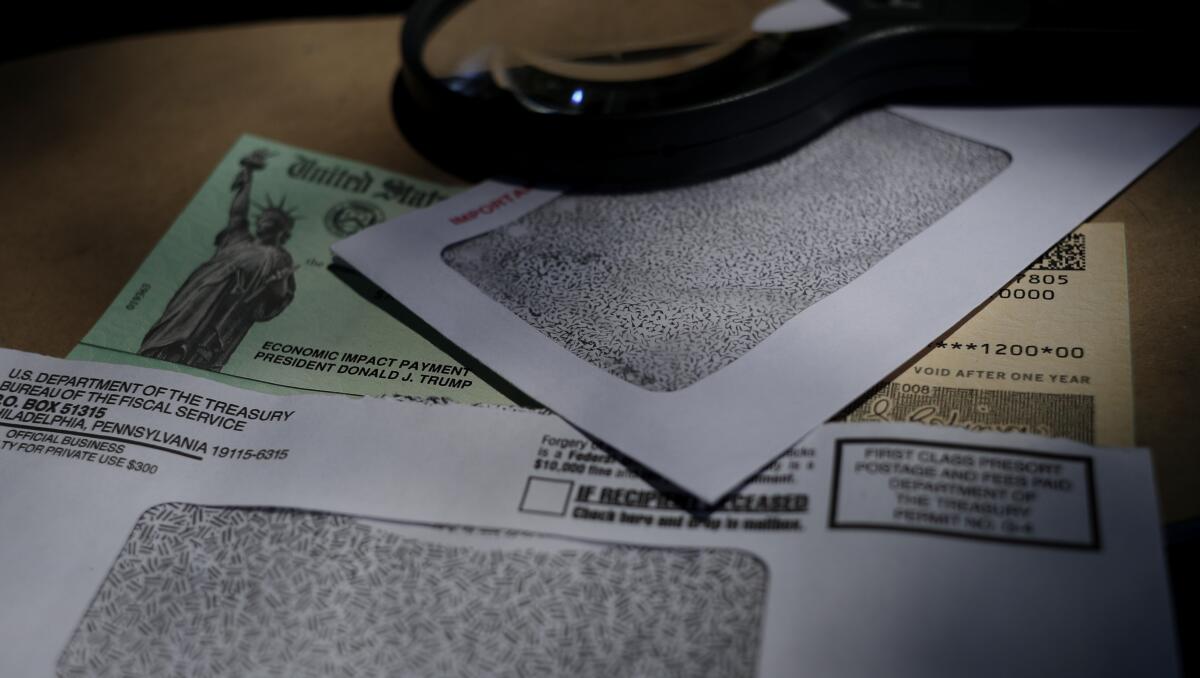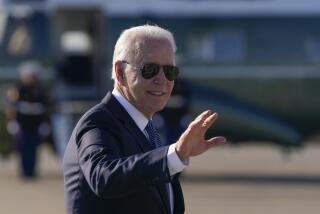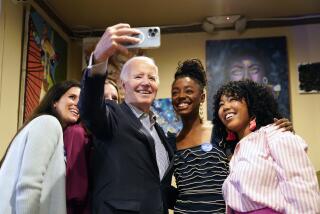Column: Biden’s $1.9-trillion big spend is a big bet on modern economic theory

- Share via
President Biden’s plan to flood Americans with nearly $2 trillion in coronavirus aid could come to a House vote early next week. Odds are decent it will also pass in the Senate.
Nearly $2 trillion. Holy hannah. The macroeconomic term for this plan is a freaking windfall.
“Now is the time we should be spending,” Biden said Tuesday at a CNN town hall in Milwaukee. “Now is the time to go big.”
In the current pandemic and economic downturn, a going-big windfall comes as excellent news. But it’s also puzzling. We can just let Daddy Warbucks, the U.S. Mint, rev the printers and make it rain? Has the government been holding out on us?
Well, not exactly. But sort of. To wit: Many economists now believe the government has been too miserly for decades because of an unfounded fear of inflation.
As Treasury Secretary Janet Yellen said earlier this month, “I have spent many years ... worrying about inflation. ... But we face a huge economic challenge here and tremendous suffering in the country. We have got to address that. That’s the biggest risk.”
If the eye-popping $1.9-trillion stimulus plan indeed passes, the Bidenian largesse could signal a sea change in the government’s approach to spending.
The old approach has a history that begins — as so much economic theory does — in trauma. In the 1970s, just after the gold standard was ended for good, architects of monetary policy grew concerned that inflation would afflict our untethered currency. They proposed reducing deficits and government spending to keep money in shorter supply. Inflation surged anyway. Then the energy crisis hit. Americans who were denied raises at work and faced with larcenous prices at filling stations “felt it at the pump,” and boy, it did not feel good.
With that anguish firmly in mind, economists redoubled their warning: Government must practice thrift and keep interest rates high, or else. But really, even when the budget didn’t balance, deficits rose, the government spent lavishly (on tax cuts and the military, mostly) and interest rates trended down, inflation just never shot up.
Then came the Great Recession 12 years ago. An economic stimulus was sorely needed, but the Obama administration worried about going too high; the word “trillion,” said one advisor, would cause “sticker shock” and lead to inflation. Congress would never go for it. So the administration stuck with a lower figure: $787 billion.
It turned out that wasn’t enough. It helped some people, but the economy shrank. And the runaway inflation that everyone feared most when the stimulus was issued in 2009 never came to pass. No gas lines, no $35 hamburgers. Perhaps, just perhaps, government spending and low interest rates weren’t the royal road to soaring prices.
So now economists — and Biden — are trying something new. They’re working on the premise that it’s neither government deficits nor a failure of thrift that causes economic problems. Rather, it’s government stinginess that leads to unemployment, which in turn deprives people the money they need to cover taxes, which in turn pay for the common good.
As Stephanie Kelton, former chief economist on the Senate Budget Committee, argues in her bestseller “The Deficit Myth,” the country’s real deficits are in healthcare, jobs, infrastructure, education and the climate. But rather than address those things by spending, writes Kelton, the government proceeds in terror of not “balancing the budget,” falsely believing that an unbalanced budget is the source of inflation.
“We run around like a six-foot-tall guy who wanders around perpetually hunched over in a house with eight-foot ceilings because someone convinced him that if he tries to stand up tall he’ll suffer a massive head trauma,” she writes.
Jason Furman, who served as chairman of the Council of Economic Advisors under President Obama, concurs. “Given low interest rates, the United States actually has even more fiscal room to respond to the crisis today than it did in the financial crisis,” he told me. “We should use that room.”
If the Biden stimulus goes through, and inflation doesn’t skyrocket, the experiment may bear out a new monetary theory. It could be time at last for the nation to stand tall, and unfurl its economy to its full height.
Of course, an experiment on such a big scale is unnerving, and Biden is facing substantial criticism for the $1.9-trillion plan. Olivier Blanchard, former chief economist at the IMF, tweeted earlier this month that such a stimulus would not just overheat the economy; it would incinerate it. Former Treasury Secretary Lawrence Summers issued a less hyperbolic warning but he brought up the fear: The policy would need to come with an aggressive fiscal policy to keep “inflationary pressures” at bay.
Kelton doesn’t completely disagree. On Twitter, she pointed out that the modern monetary theory she advocates requires Congress to stop talking about budgets and start talking entirely about mitigating inflation, if it comes, by other monetary policy means.
You’re going to hear a lot more kvetching about government spending and, geez, $1.9 trillion. But remember, no one pushing Biden’s plan is trying to pave the way for a big, fat inflationary decade, filled with 1970s malaise, austerity measures and agony at the pump. They’re just willing to bet that a nearly $2-trillion stimulus, if the economy is monitored closely enough, will improve infrastructure, education, climate and healthcare, while making employers eager to find workers, which will push up wages and benefits.
Which all sounds great. Especially when the checks show up.
More to Read
A cure for the common opinion
Get thought-provoking perspectives with our weekly newsletter.
You may occasionally receive promotional content from the Los Angeles Times.










